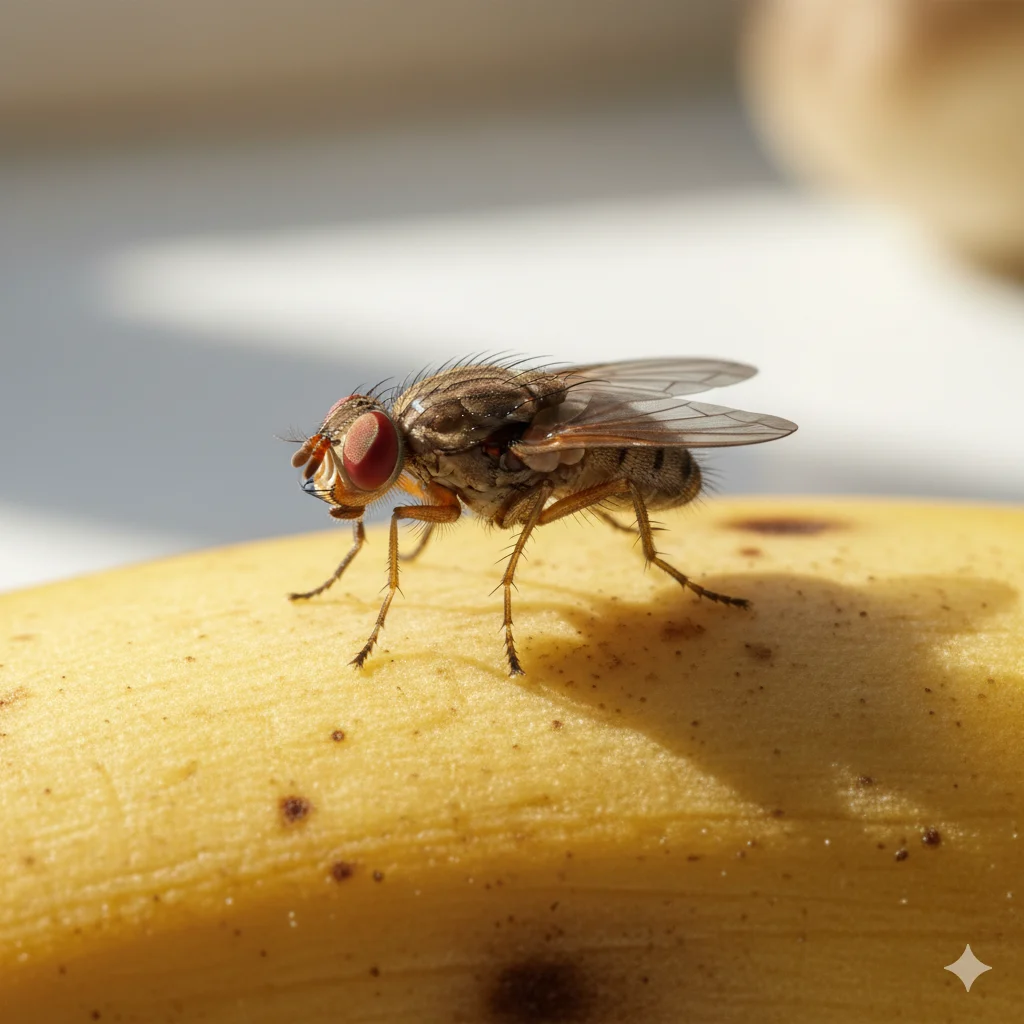<sup>Dealing with a gnat infestation? You’re not alone. This comprehensive guide, backed by expert pest control strategies, will help you get rid of gnats for good.</sup>
That tell-tale cloud of tiny, buzzing insects can turn your peaceful home into a source of frustration. Whether they’re emerging from your kitchen sink, your beloved houseplants, or your fruit bowl, getting rid of gnats is a top priority.
This isn’t just another list of tips. This is a strategic, step-by-step guide to gnat control, from identification to elimination and long-term gnat prevention. Let’s reclaim your space.
What Are Gnats? Identifying Your Enemy
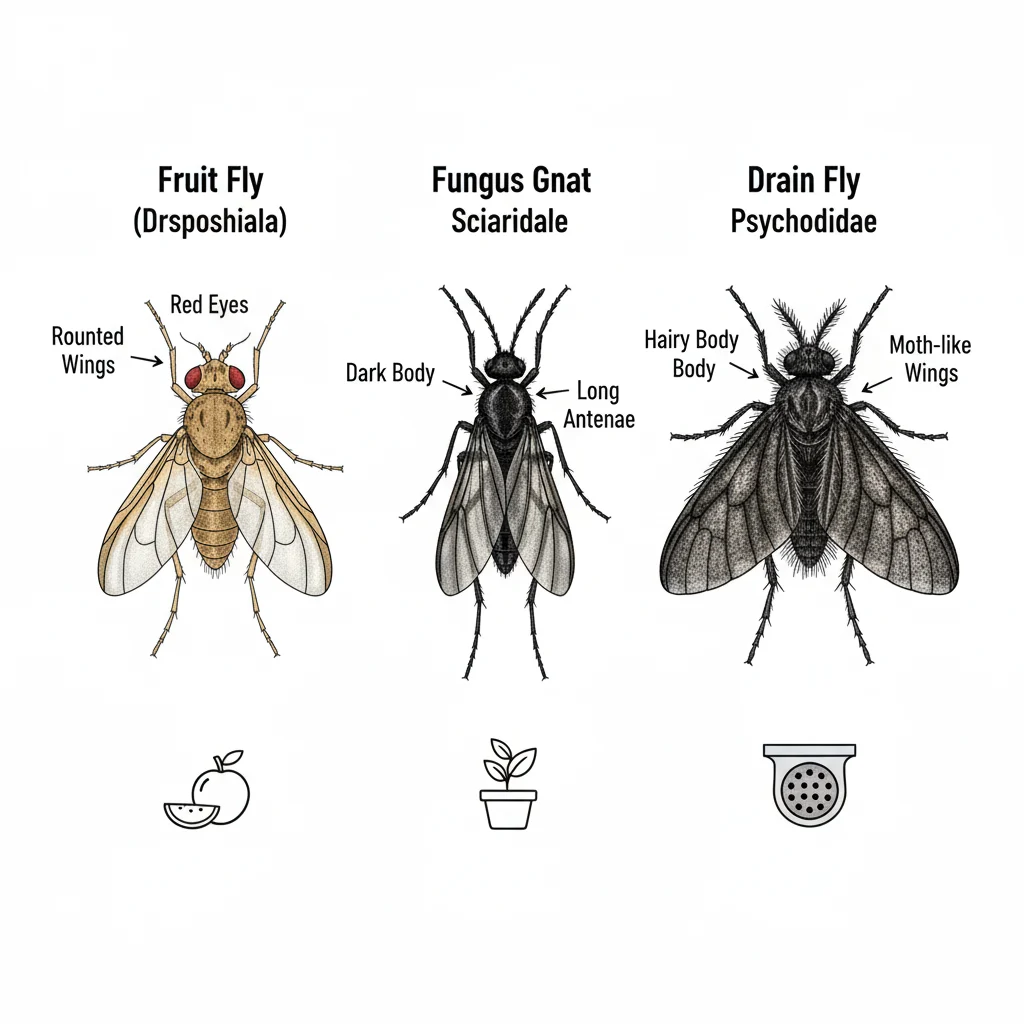
First, it’s crucial to know what you’re dealing with. The term “gnat” covers a few common household pests. Correct gnat identification is the first and most critical step to choosing the right solution.
| Gnat Type | Appearance | Attracted To | Common Breeding Ground |
|---|---|---|---|
| Fruit Flies | Tan-brown, round-bodied, red eyes | Ripening/fermenting fruit, sugary spills, alcohol | Overripe produce, trash cans, recycling bins |
| Fungus Gnats | Dark, slender, long legs, mosquito-like | Moist soil in houseplants | Potted plant soil, especially when overwatered |
| Drain Flies | Fuzzy, moth-like wings, light gray or tan | Moist, organic film inside drains | Sink, shower, and floor drains |
Pro Tip: To confirm drain flies, tape some clear plastic wrap over a drain overnight. If adults are trapped inside the next morning, you’ve found the source.
What Causes Gnats in the House?
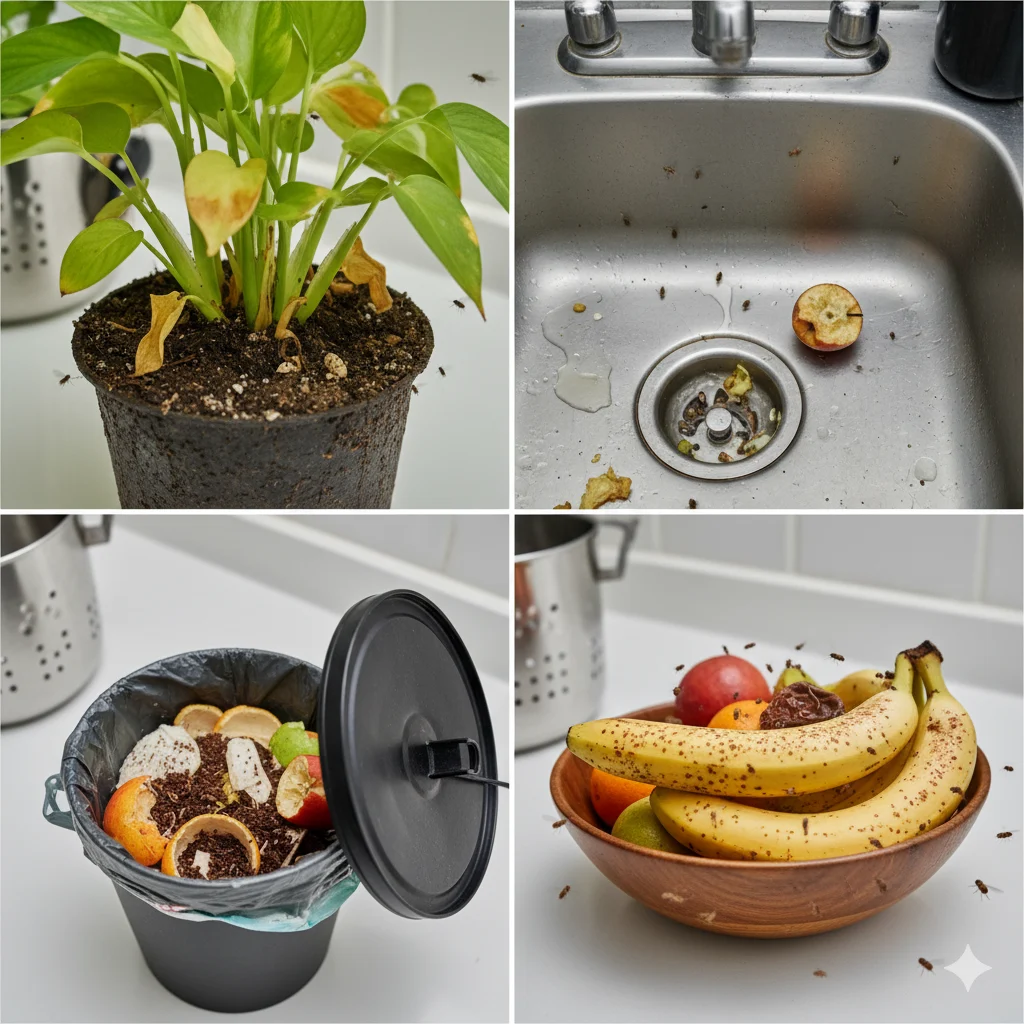
Understanding what causes a gnat infestation is key to preventing their return. Gnats are primarily attracted to three things:
- Moisture: Overwatered plants, leaky pipes, and standing water are a paradise for gnats.
- Food Sources: Fermenting fruits and vegetables, spilled sugary drinks, and food residues in trash cans are a primary food source, especially for fruit flies.
- Organic Debris: The slimy biofilm that builds up in drains is a perfect breeding and feeding ground for drain flies.
Step 1: Eliminate the Source (The Most Important Step)
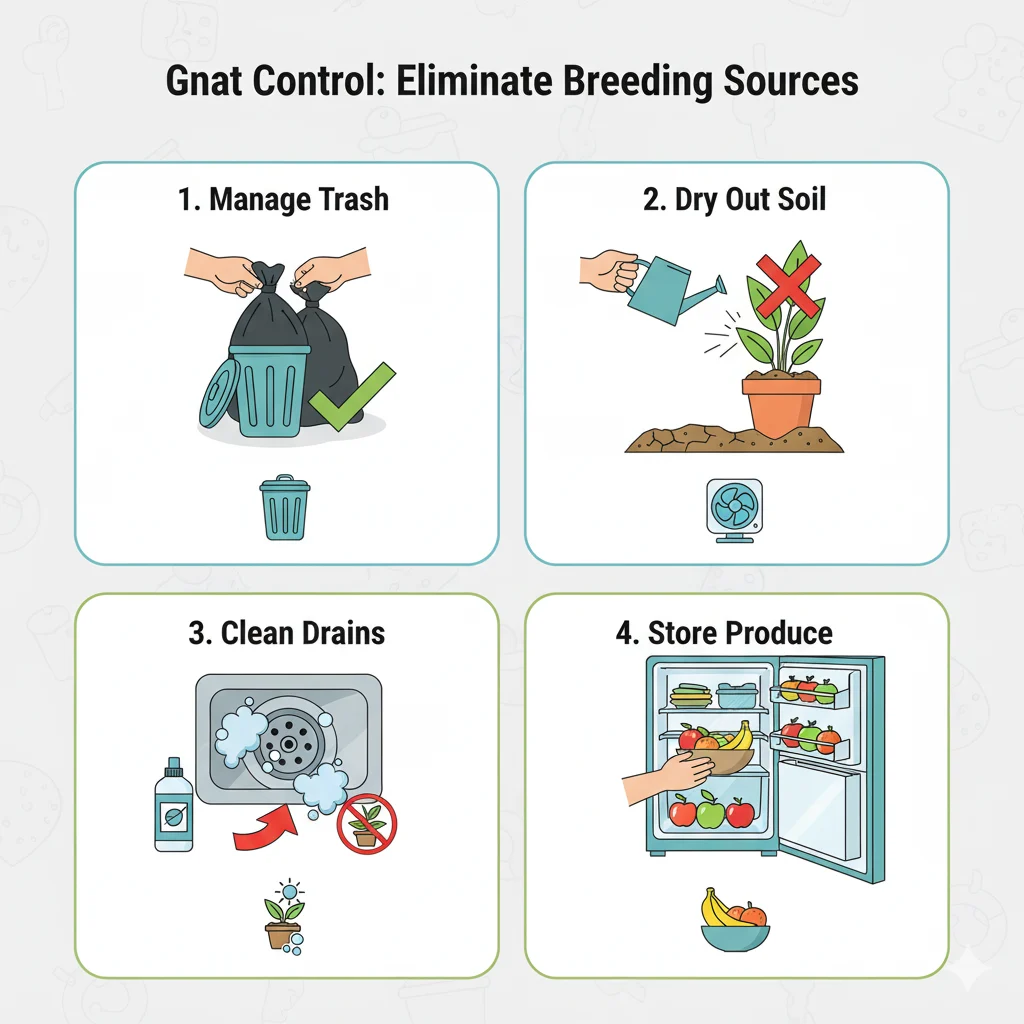
Traps alone won’t solve the problem. You must cut off the gnat’s life cycle at its source. This is the most effective form of gnat control.
For Fruit Flies:
- Store Produce Properly: Keep ripe fruit (especially bananas and tomatoes) in the refrigerator.
- Take Out the Trash: Empty kitchen trash and recycling bins frequently. Rinse all bottles and cans.
- Deep Clean: Wipe down counters, clean up spills immediately, and don’t leave dirty dishes sitting.
For Fungus Gnats:
- Dry Out Soil: Let the top 1-2 inches of soil in your houseplants dry out completely between waterings. This kills the larvae.
- Check for Drainage: Ensure your pots have adequate drainage holes to prevent waterlogging.
- Use a Potato Trap: Place a slice of raw potato flesh-side down on the soil. Check after a few hours—you’ll find larvae feeding on it. Discard and replace.
For Drain Flies:
- Clean Your Drains: Pour a pot of boiling water down the drain. For a deeper clean, use a baking soda and vinegar treatment: pour ½ cup of baking soda followed by ½ cup of white vinegar. Let it fizz for 10 minutes, then flush with another pot of boiling water.
- Scrub the Drain: Use a long-bristled brush to physically scrub away the organic film inside the drain.
Step 2: Deploy DIY Gnat Traps to Catch Adults
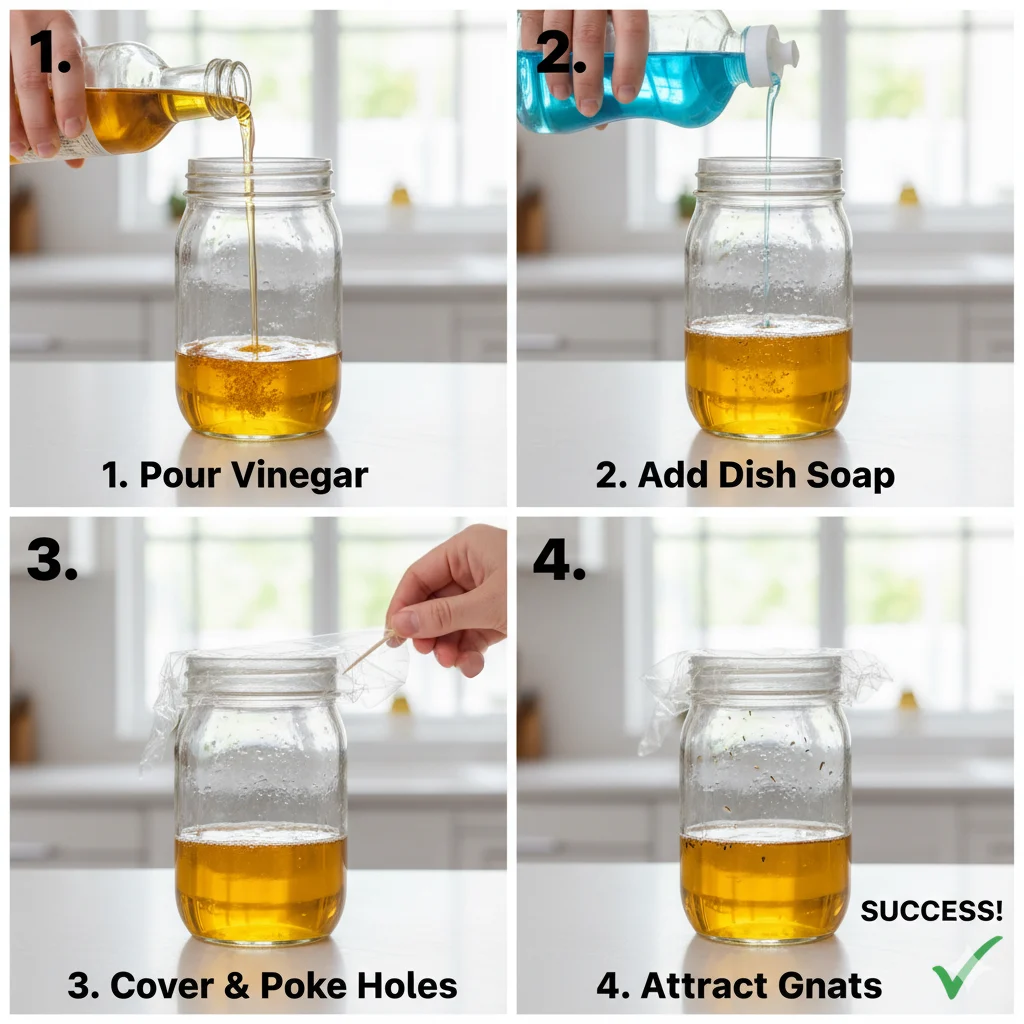
While you eliminate the source, use these effective homemade gnat killers to trap the adult population. You should see results within 24-48 hours.
The Classic Apple Cider Vinegar Trap
This is the most effective DIY gnat trap for fruit flies.
- Get a small jar or bowl and pour in about a half-inch of apple cider vinegar.
- Add a few drops of dish soap. This is crucial—it breaks the surface tension, causing the gnats to sink and drown.
- (Optional) Cover with plastic wrap and poke small holes. Gnats can get in but can’t escape.
The Red Wine Trap
Don’t waste that last bit of wine!
- Leave a bottle with a small amount of red wine at the bottom.
- Add a drop of dish soap, swirl gently, and leave it uncapped near the infestation.
Commercial Solutions for Stubborn Infestations
- Yellow Sticky Traps: Excellent for fungus gnats. The bright color attracts them, and they get stuck on the adhesive. Place them in the soil of affected plants.
- Bug Zappers: A small UV light trap can be effective for catching large numbers of flying adults in a specific room.
How Long Does It Take to Get Rid of Gnats?
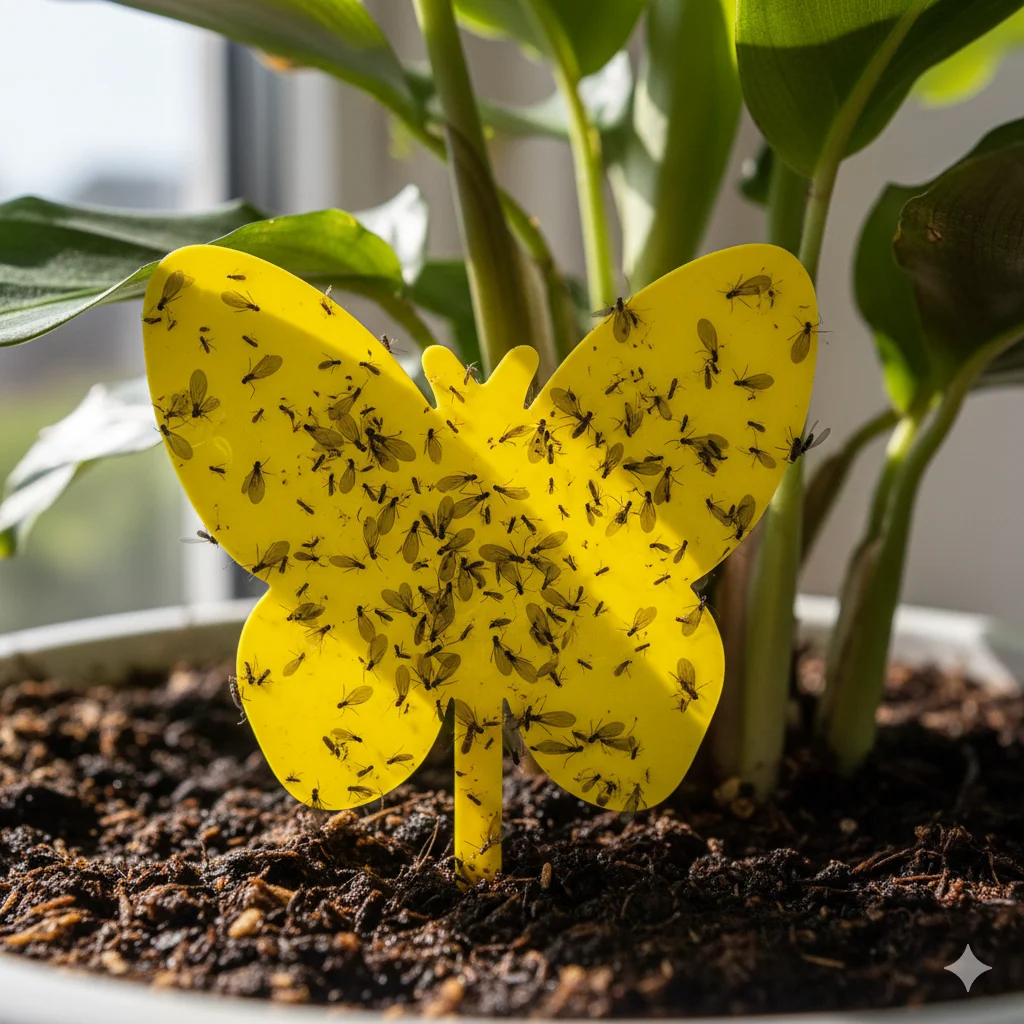
This is a common question. With consistent application of the methods above:
- You will see a significant reduction in adult gnats within 3-5 days.
- For a complete elimination of the infestation, expect it to take 1-2 weeks. This timeframe ensures you’ve killed off all the larvae and pupae, breaking the breeding cycle.
Long-Term Gnat Prevention Strategies

Once the gnats are gone, keep them out for good with these gnat prevention habits:
- Water Plants Wisely: Always check soil moisture before watering. Consider using a soil moisture meter.
- Maintain Drains: Perform a boiling water or baking soda flush in kitchen and bathroom drains weekly.
- Store Food Securely: Keep fruits and vegetables in sealed containers or the fridge.
- Manage Trash: Use bins with tight-fitting lids and clean them regularly.
Frequently Asked Questions (FAQ)
Q: Are gnats harmful to humans or plants?
A: Most gnats are a nuisance, not a direct health threat. However, fungus gnat larvae can damage plant roots, and fruit flies can contaminate food with bacteria.
Q: Why are there gnats in my bathroom?
A: This is almost always drain flies. They breed in the organic matter building up in shower, sink, and floor drains. Focus your efforts on cleaning these areas.
Q: Does bleach kill drain flies?
A: While bleach can kill larvae on contact, it’s less effective than mechanical cleaning (scrubbing) or enzymatic cleaners. Bleach flows quickly down the drain without sufficiently breaking up the slimy biofilm where larvae live.
Q: What’s the difference between gnats vs fruit flies?
A: “Gnat” is a broader term. Fruit flies are a specific type of gnat attracted to fermenting fruit. The control methods are often similar, but identification helps you target the source more accurately.
Final Summary: Your Action Plan to Get Rid of Gnats
- IDENTIFY: Use the table above to determine if you have fruit flies, fungus gnats, or drain flies.
- ELIMINATE: Aggressively clean and remove the sources of moisture, food, and breeding grounds.
- TRAP: Deploy apple cider vinegar traps or yellow sticky traps to catch adult gnats.
- PREVENT: Adopt long-term habits like proper watering and drain maintenance to keep them from returning.
By following this expert gnat control strategy, you can eliminate your gnat infestation and enjoy a pest-free home. Have a stubborn gnat problem we didn’t cover? Share your specific situation in the comments below—our community and experts are here to help!

